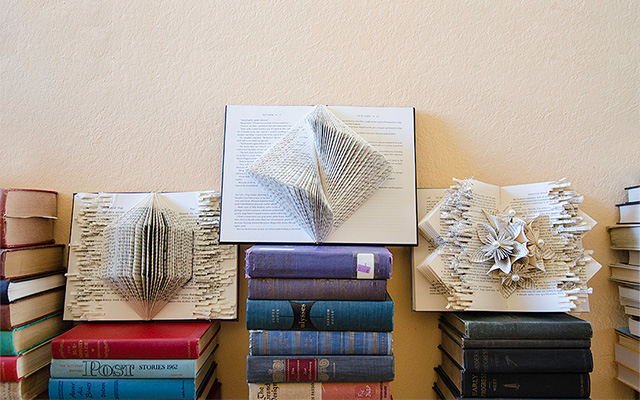If you want to make your own book sculpture, here are some pointers to help you find the right book to use.
Book Size — You can use any size of book you want. I usually work with books ranging in size from 8″ x 11″ to 9″ x 12″. Hardcover fiction books generally fall in this size range. I may go smaller if I want to make mini keepsakes but I wouldn’t go any bigger. As the pages get wider, the depth of the book sculpture also increases. This may not be a problem if you’re displaying the book sculpture on a shelf or table top. But if you’re going to hang it on a wall, too much depth may become too awkward. But feel free to experiment! :)
Hardcover Types — When choosing a book to use, be mindful of the color of the hardcover and whether it is a solid color or two-toned. The hard cover acts as a visual frame for the book sculpture so it is important not to overlook this.
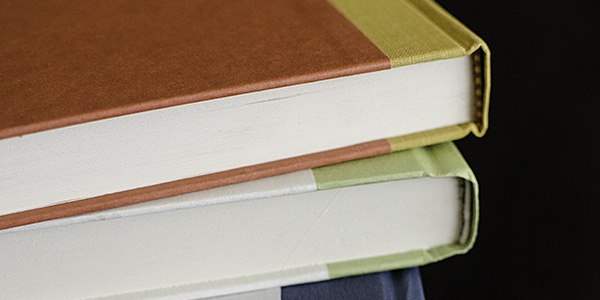
This are examples of two-toned hardcover books.
Book Binding — There are two kinds of book binding: sewn and glued. Books with glued binding are perfect for all the book sculpture projects. Some sewn-bound books are reinforced with glue and I often use this as well. Books that are simply sewn-bound are not really ideal to use. The pages in the signatures are not uniform in width and will not create consistent folds. (A signature, by the way, is a group of pages.) And since the pages are not glued to the spine, when you cut the pages, the narrow cut pages tend to become loose or wobbly — and it runs the risk of separating from the book.
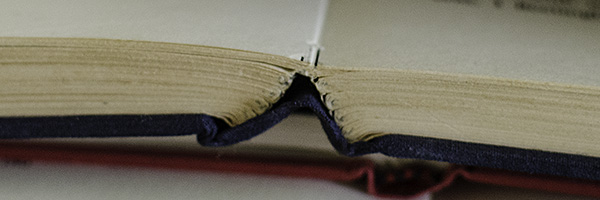
In sewn-bound books, you’ll see the signatures along the spine.
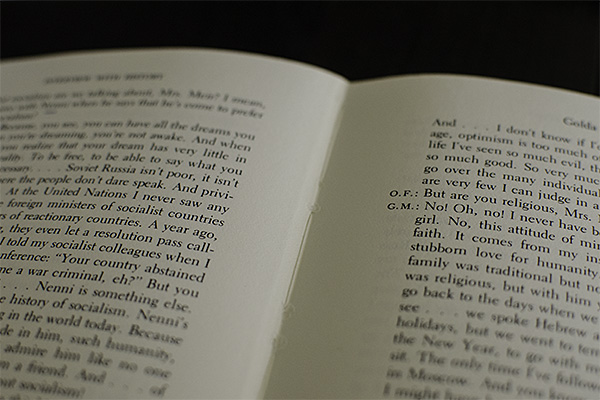
If you look in the middle of the signatures in sewn-bound books, you’ll see the thread.
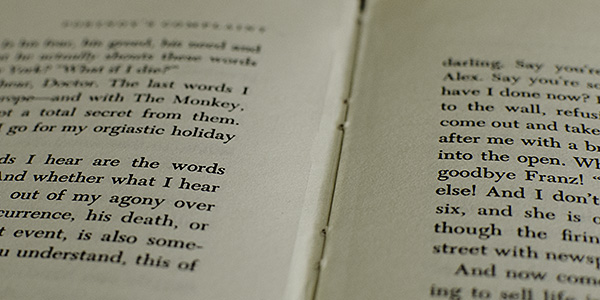
In other areas of the signature, still along the spine, you’ll see the notches where the thread is sewn.
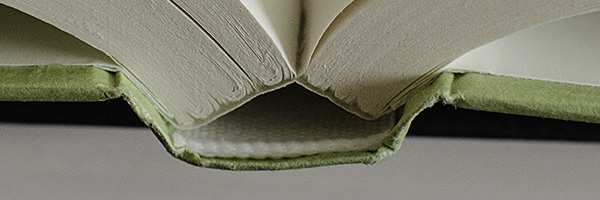
This is an example of glued binding.
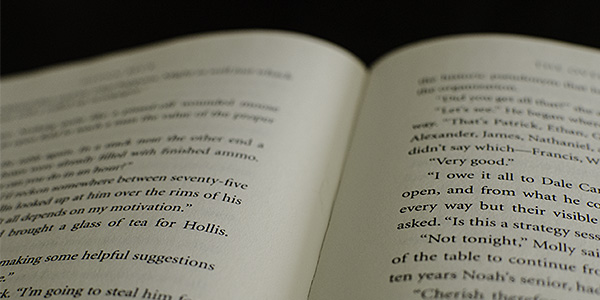
This is what glued binding looks like along the spine.
Use books that have strong binding, not books with pages that are falling apart. This should be obvious, but sometimes you have to double check by stretching the pages along the spine to make sure the glue on the spine is not brittle. If it is brittle, the book pages will most likely fall apart once you start folding. I’ve had a few experiences where I was almost done with the book sculptures when the folded pages started falling apart. If a whole block of pages comes off, it is easily remedied by applying hot glue along the spine. If individual pages start falling off one after the other, then it is more of a pain to fix — and often times, I just abandon that particular project.
Paper Thickness — Stay away from dictionary-thin pages. The thicker the page, the better — as long as it is still paperweight. It gives good volume and makes the book sculpture sturdy. Some old books have cardstock-weight pages. In my opinion, these pages are too thick to allow for any adjustments when folding. You’ll figure out the paper thickness you’re comfortable with as you start exploring different kinds of books.
Cracked Spines — Aside from indulging our creative impulses and producing artwork, a major objective of altered book art is to recycle and reuse old books that nobody wants to keep anymore. With this in mind, don’t easily dismiss books with cracks along the spine (as shown in the photo below). A lot of them are surprisingly still usable. The important thing is that the pages aren’t falling apart. You’ll be able to hide any cracks and gaps along the spine once the pages have been folded. And you’ll feel good knowing that you rescued a seemingly broken book from being thrown in a landfill.
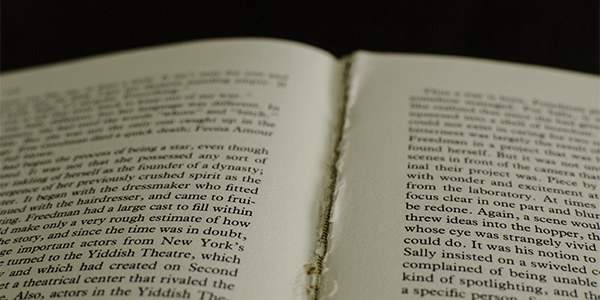
Deckled Edges — I love books with deckled edges (as shown in the photo below) but they are not suitable for book sculptures because, with the uneven edges, it will be challenging to keep your folds consistent.
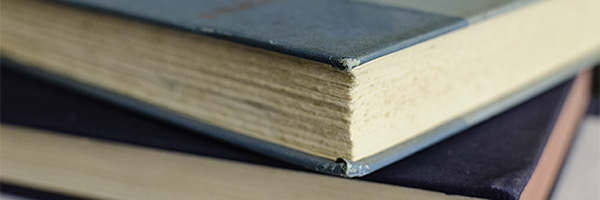
Non-fiction Books — I love using nonfiction books. I find that a lot of them have thicker paper than most fiction books, especially when compared to romance novel books. And they usually have a simple black hardcover, which I like. Some fiction books have glossy photo inserts like in the photo below. I don’t like mixing them with the other pages so I just tear them out from the book and I’m good to go. But feel free to include them, they will definitely add interest.
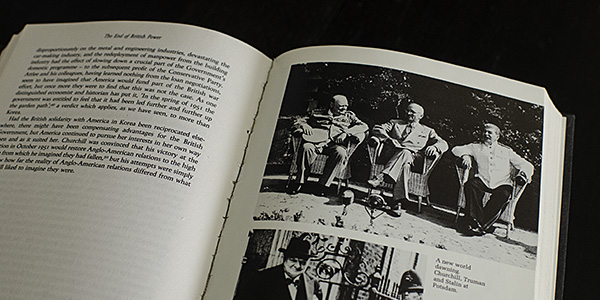
Where to Find Used Books
Now that you know what types of books to use for your book sculpture projects, it’s time to stock up on them. My favorite place to get used books is my local library bookstore. I usually get the books for $1 each. And a lot of times, I will find a few books I can use in the “free pile”. So if you haven’t visited your local library bookstore yet, now is the time to do so. You can also check out thrift stores and used bookstores if you’re not having any luck in your local library.

I’d love to hear your thoughts. Email me your comments here.
